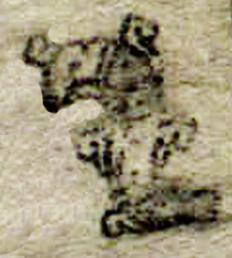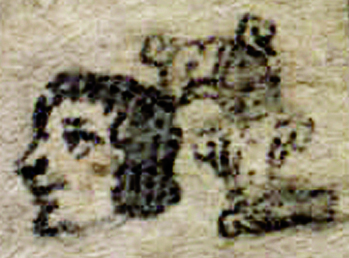Cuica (BMapO101)
This painted black-line drawing of the simplex glyph for the personal name Cuica (“He Sings”) is attested here as a man’s name. The glyph is a highly decorated speech scroll, which converts it into a song scroll. It has at least four small volutes coming off the principal one. The principal volute is segmented, with sections alternating between gray and white. Each segment is dotted, too. An unidentified object appears at the base of the principal volute.
Stephanie Wood
In this collection, the Cuica glyph is closest to the Cuicatlan glyph in the Codex Mendoza. This segmentation with alternate coloring is vaguely reminiscent (visually) of agricultural parcels. But any real relationship remains elusive.
Stephanie Wood
This glyph is not glossed; the decipherment of the glyph comes from Gordon Whittaker’s contribution to the study by Mary E. Miller and Barbara E. Mundy (2012).
c. 1565
Jeff Haskett-Wood
cantar, canciones, volutas, nombres de hombres

cuica, to sing, https://nahuatl.wired-humanities.org/content/cuica
Él Canta
Stephanie Wood
Beinecke Map/Codex Reese, section 8, no. 101 in the Whittaker study (published in the Miller/Mundy book, 2012), and see the original at: https://brbl-dl.library.yale.edu/vufind/Record/3600017
The Bodleian Libraries, University of Oxford, hold the original manuscript, the MS. Arch. Selden. A. 1. This image is published here under the UK Creative Commons, “Attribution-NonCommercial-ShareAlike 3.0 License” (CC-BY-NC-SA 3.0).





